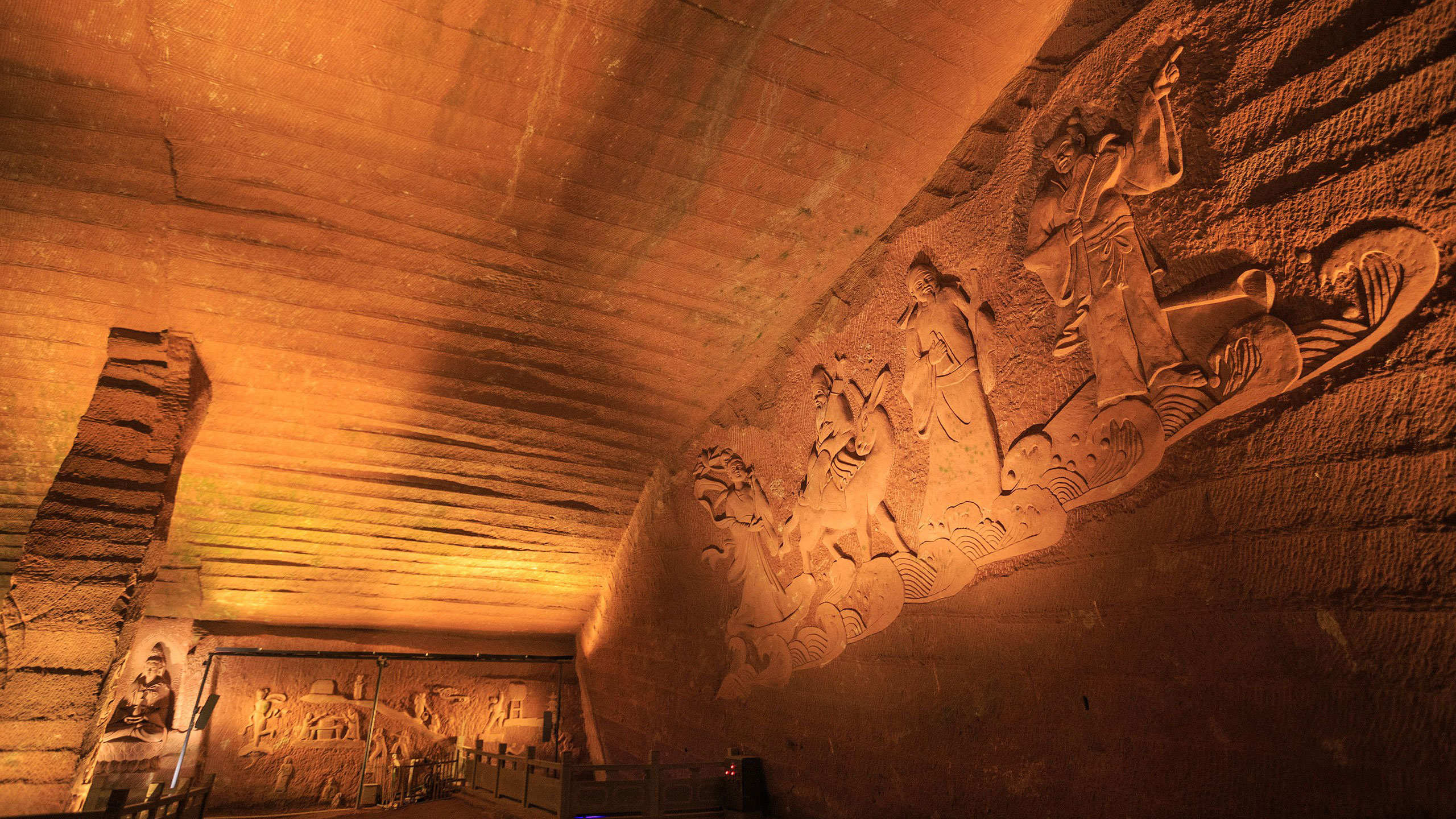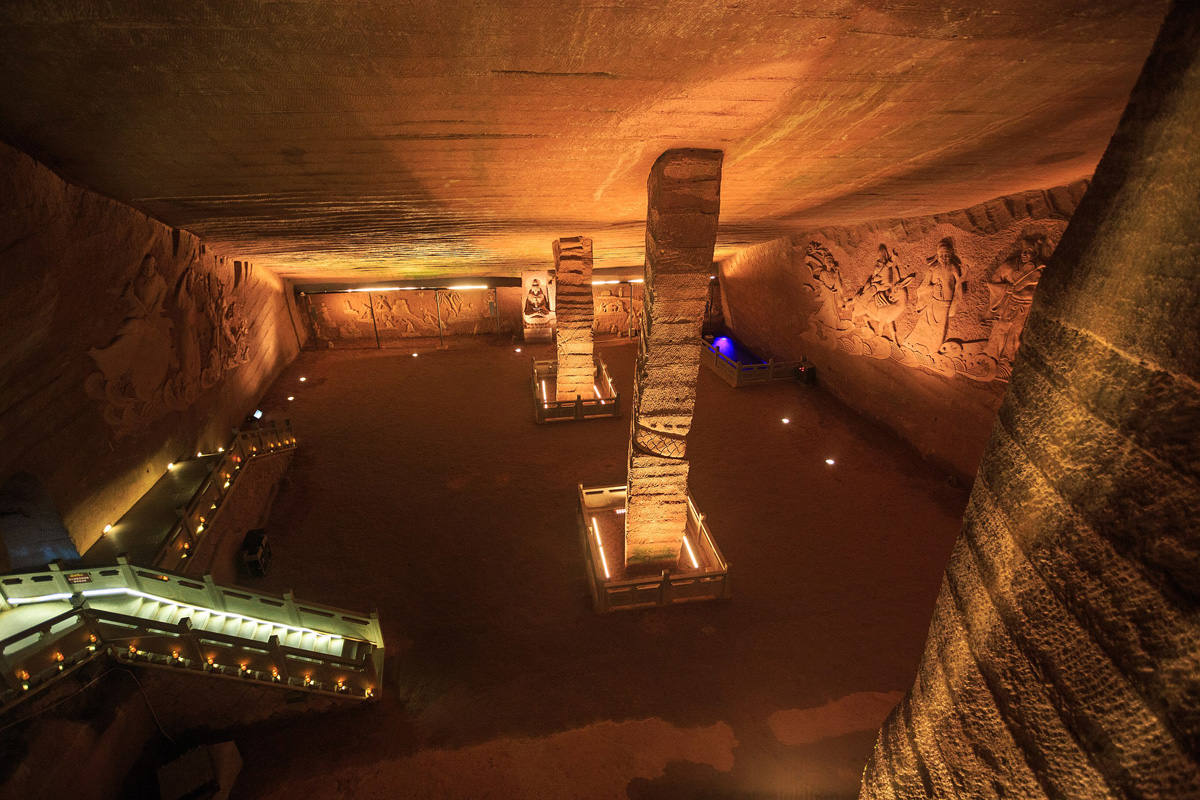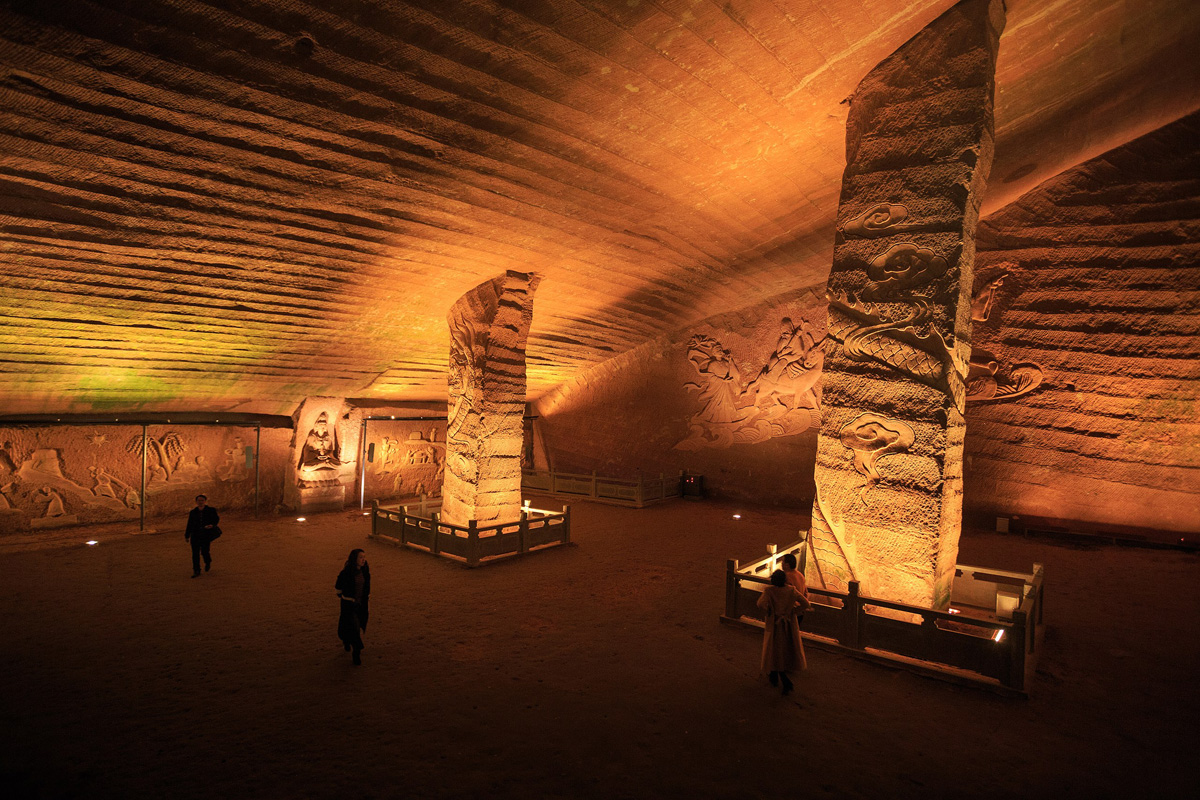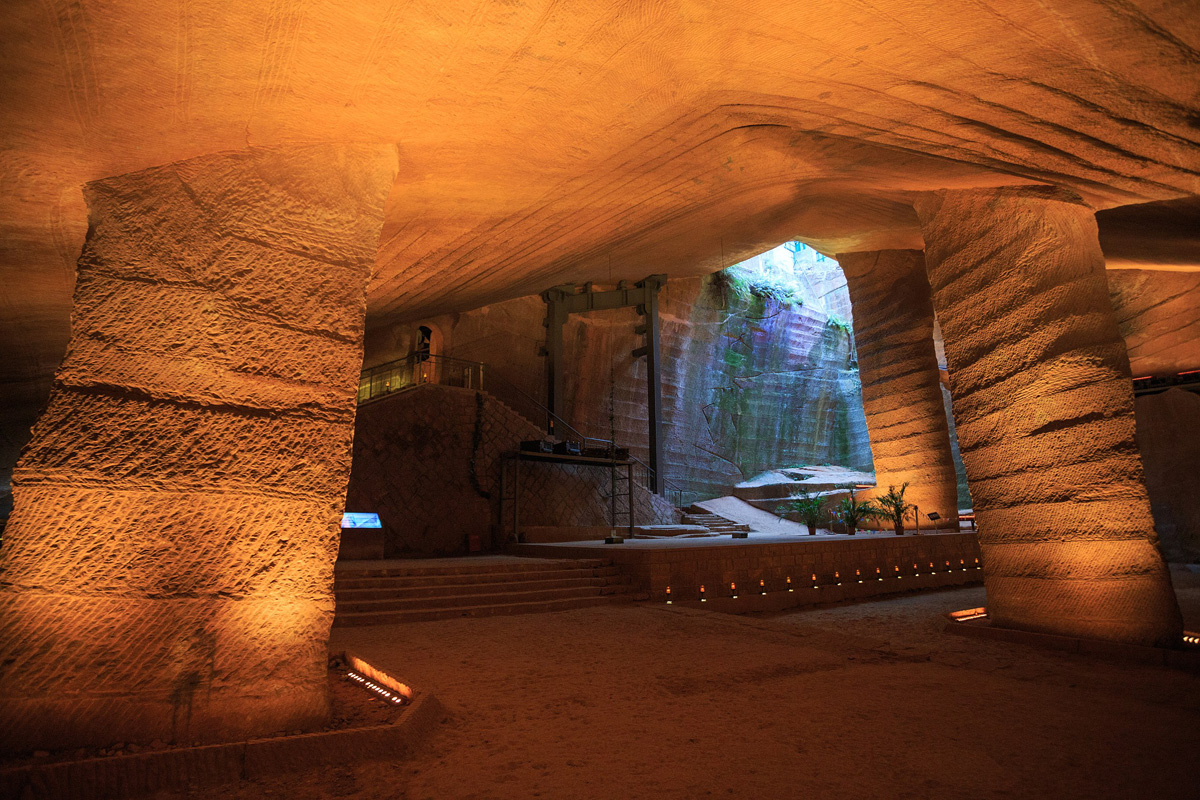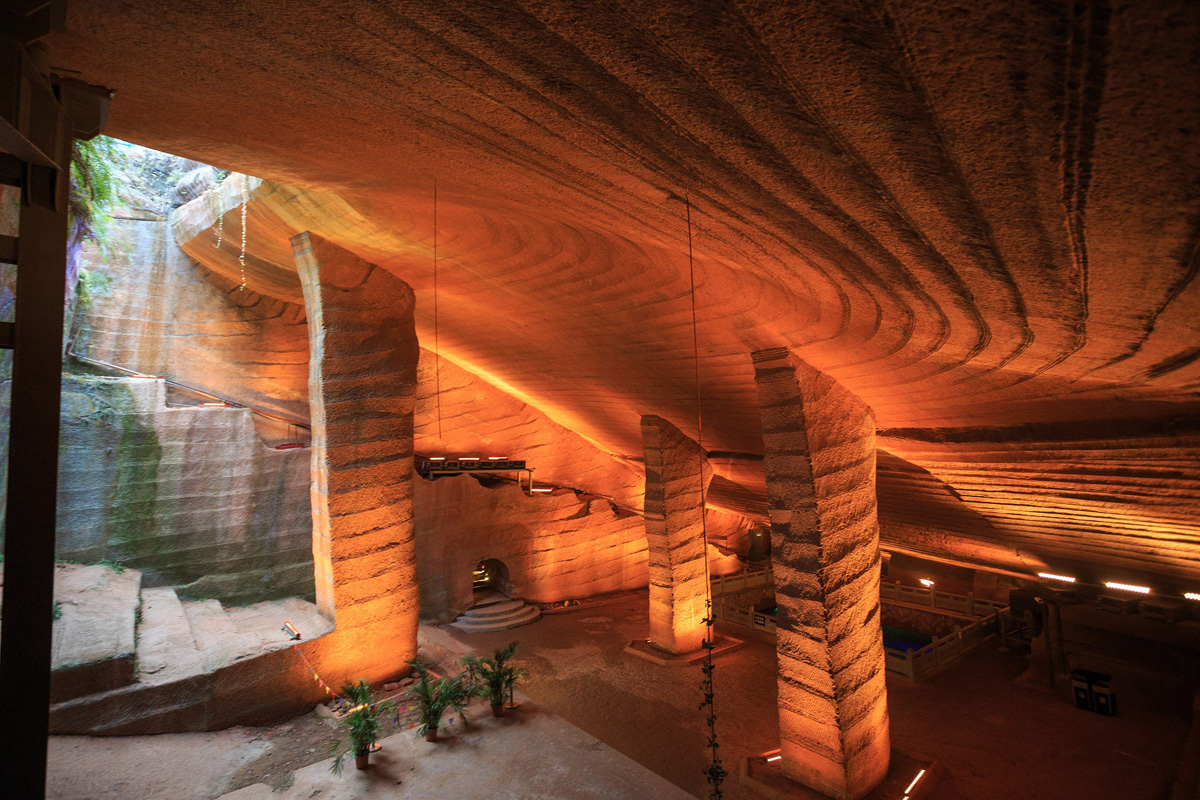In 1992, four farmers in Longyou County, Quzhou Prefecture, Zhejiang Province, on the east coast of China, were curious about the great depth of a series of pools scattered near the small village of Shiyan Beicun. To satisfy this curiosity, which, like patience, is the mother of science and the driving force behind many discoveries, the farmers decided to drain five of the pools. So it was that, at the end of their draining, the four peasants discovered enormous caverns dug out of the sandstone by man. They are the Longyou Caves or Xiaonanhai Stone Chambers.
Research carried out since the year of their discovery and the study of archaeological finds seem to show that the caves were dug at least 2000 years ago. However, one fact that surprises experts and makes it very difficult to date is that neither their construction nor their existence is mentioned in any historical document.
In fact, on the banks of the Xin’an River, about 200 km northwest of the Longyou Caves, very similar caves, the so-called Huashan Mysterious Grottoes, were recently discovered. Some experts have used lichenometric dating (or the study of the size of lichens on rocks) to claim that they were built more than 1,500 years after the Longyou Caves, in other words, at the end of the Ming Dynasty (1552-1667 A.D.).
At the same time, as in the Longyou Caves, the remains found during the course of excavation and cleaning of the Huashan Caves, including oil lamps and glazed ceramic wares such as pots, bowls, pitchers and small pieces of other objects, told a different story. Archaeologists certified these finds as products of the Jin dynasty (265-439). The archaeological remains therefore provided a convincing basis for dating the beginning of the excavation of the grottoes to before or during the Jin dynasty. Therefore, both the Longyou and Huashan grottoes could have a similar origin in time.
In any case, whether construction began at one date or another, several features make the Longyou Grottoes a fascinating work of monumental architecture. Indeed, the 24 caves discovered to date, with a total excavated area of more than 30,000 m2, are enormous for a man-made structure. Their ceiling, walls and pillars were carved out of the sandstone in exactly the same pattern, in a succession of parallel bands 60 cm wide, using equally parallel lines of chiselling at an angle of 60° to the axis of the band. Finally, all the caves retain a similar structure, even though they are not connected to each other. This structure has the shape of an inverted square, the widest part of which is at the entrance and the narrowest part, at the end of a roof with a slope of about 45º, at the bottom.
Historians and archaeologists believe that it may have been a work ordered by an emperor because of the reliefs found on some of the walls. Other theories consider the possibility that it was originally a quarry for extracting building materials. Finally, more speculative explanations suggest that the Longyou Caves may have been a palace complex of an emperor, used to house part of his armies, or even served as an imperial mausoleum. Given the meagre corpus of documents, artefacts and evidence for any of these hypotheses, the Longyou caves can only be regarded as a surprising mystery. While the unknowns surrounding them are being clarified, we will enjoy their extraordinary construction.
Sources: Magnet, Science Direct, China.org, Wikipedia.
Images: Zhangzhugang – Creative Commons 4.0.


